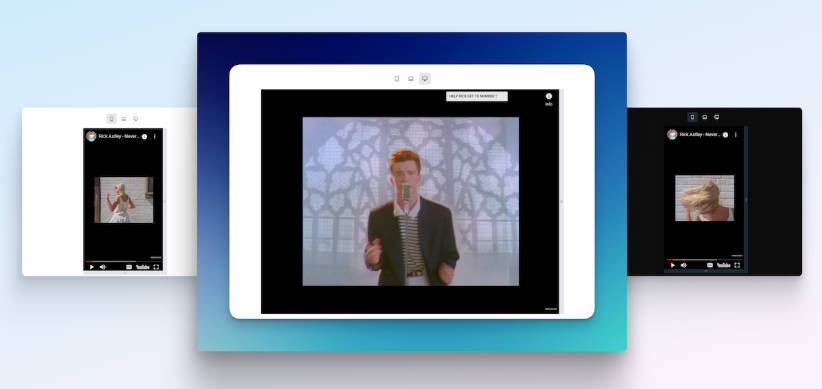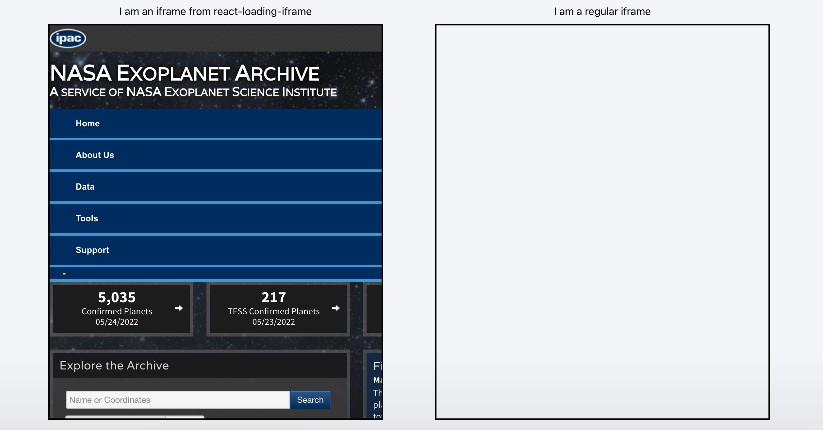React component
This component allows you to encapsulate your entire React application or per component in an iFrame.
npm install --save react-frame-component
How to use:
import Frame from 'react-frame-component';
const Header = ({ children }) => (
<Frame>
<h1>{children}</h1>
</Frame>
);
ReactDOM.render(<Header>Hello</Header>, document.body);
Or you can wrap it at the render call.
ReactDOM.render(
<Frame>
<Header>Hello</Header>
</Frame>,
document.body
);
Props:
head
head: PropTypes.node
The head prop is a dom node that gets inserted before the children of the frame. Note that this is injected into the body of frame (see the blog post for why). This has the benefit of being able to update and works for stylesheets.
initialContent
initialContent: PropTypes.string
Defaults to '<!DOCTYPE html><html><head></head><body><div></div></body></html>'
The initialContent props is the initial html injected into frame. It is only injected once, but allows you to insert any html into the frame (e.g. a head tag, script tags, etc). Note that it does not update if you change the prop. Also at least one div is required in the body of the html, which we use to render the react dom into.
mountTarget
mountTarget: PropTypes.string
The mountTarget props is a css selector (#target/.target) that specifies where in the initialContent of the iframe, children will be mounted.
<Frame
initialContent='<!DOCTYPE html><html><head></head><body><h1>i wont be changed</h1><div id="mountHere"></div></body></html>'
mountTarget='#mountHere'
>
</Frame>
contentDidMount and contentDidUpdate
contentDidMount: PropTypes.func
contentDidUpdate: PropTypes.func
contentDidMount and contentDidUpdate are conceptually equivalent to
componentDidMount and componentDidUpdate, respecitvely. The reason these are
needed is because internally we call ReactDOM.render which starts a new set of
lifecycle calls. This set of lifecycle calls are sometimes triggered after the
lifecycle of the parent component, so these callbacks provide a hook to know
when the frame contents are mounted and updated.
Accessing the iframe's window and document
The iframe's window and document may be accessed via the React context values window and document respectively.
const MyComponent = (props, context) => {
const {
document: iframeDocument,
window: iframeWindow
} = context;
return (<...rendered jsx.../>);
};
MyComponent.contextTypes = {
window: PropTypes.any,
document: PropTypes.any
};





